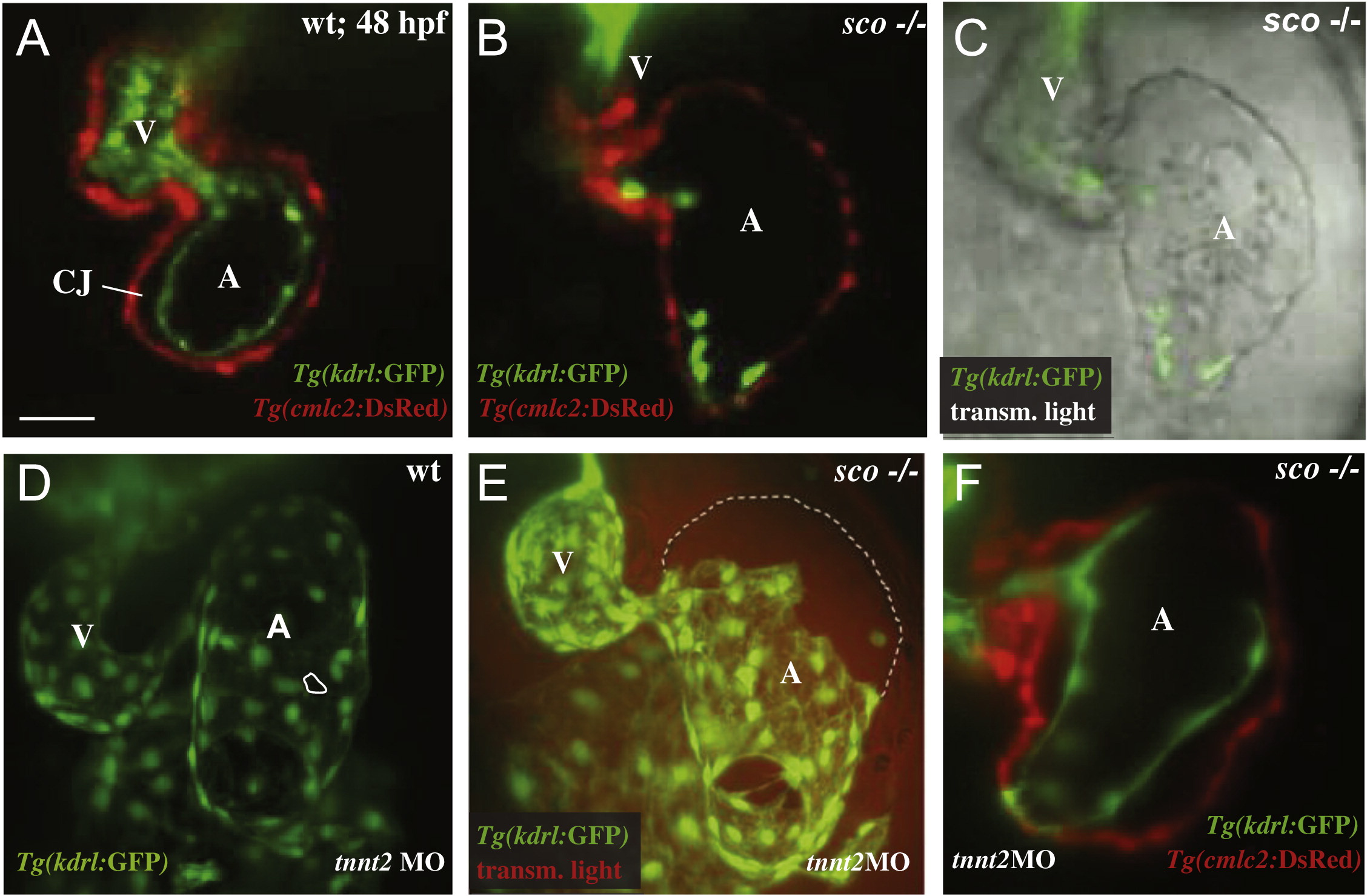Fig. 3 The endocardium fails to line the entire atrium in scote382 mutants. SPIM images of 48 hpf Tg(kdrl:GFP)s843; Tg(my17:DsRed)s879 embryos. Wild-type endocardium (A), (D) forms transient gaps, but recovers to line the entire chamber. A transient gap is outlined in white in panel D. The cardiac jelly (CJ) layer remains intact. scote382 mutant endocardial cells form transient gaps that develop into large areas devoid of endocardial cells (B), (C), (E) and (F). Endocardial gaps form in both the presence (A)–(C) and absence (D)–(F) of blood flow. Images taken in the presence of flow (A)–(C) are stills taken from movies documenting beating hearts ( Video 6). tnnt2 MO injected embryos (D)–(F) exhibit the same pattern of transient gaps in wild-type and scote382 mutants, with a stereotypical deficiency in the outer curvature of the atrium observed in mutants. A: atrium; V: ventricle. Scale bar: 20 μm.
Reprinted from Developmental Biology, 372(1), Mellman, K., Huisken, J., Dinsmore, C., Hoppe, C., and Stainier, D.Y., Fibrillin-2b regulates endocardial morphogenesis in zebrafish, 111-119, Copyright (2012) with permission from Elsevier. Full text @ Dev. Biol.

